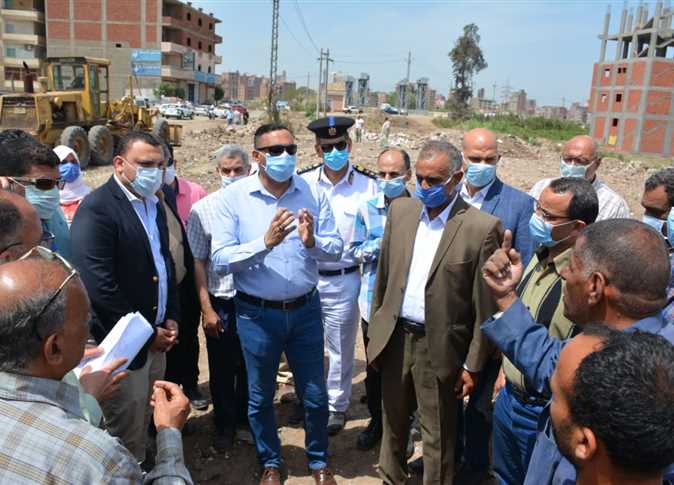Luxor–A few years ago a decision was made to turn the city of Luxor into an open-air museum and give it a complete make-over. Luxor is known for its extensive ancient history, having been one of the most important religious and administrative capitals of ancient Egypt. It boasts a large number of temples and tombs, both on its east and west bank, and is a hot spot for tourists from all over the world. Although Samir Farag, the governor of Luxor and mastermind of the city’s development scheme, speaks continuously of his great achievements, many question his reasoning and wonder who the true beneficiaries of his scheme really are.
In 2007, as part of the governor’s plan to beautify the city and preserve its ancient monuments, the historic village of Gourna had its residents forcibly removed and relocated to a modern residential area further north. The authorities argued that the village’s 100-years old mud-brick houses were built on top of ancient Egyptian tombs that were being looted by the residents on a regular basis. Following the relocation, bulldozers were mobilized to tear down the houses and salvage what remained of the looted tombs. The decision to use bulldozers to level the homes contradicted what was meant to have been an effort by officials to protect and preserve these monuments.
Regarding their new homes, the relocated ex-Gourna residents have much to complain about. “The houses are all crammed together. We have no more space to raise livestock,” says one local resident, “now we must buy many things from the souk [market], when before we used to have our own chickens and we could bake our own bread.” Many cracks have already appeared in the walls and ceilings of their new homes, and many believe it is because the houses were built with very cheap material. “No one is happy about their situation here,” affirms the resident.
On the east bank, the situation is changing very rapidly as more and more buildings are being demolished. Part of the governor’s plan in this part of the city is to give greater exposure to the approximately 3-kilometer avenue of sphinxes that had previously linked the Luxor temple with the Karnak temple further north. However, since it fell out of use by the Graeco-Roman period, over 2000 years of the city’s history would need to be removed first to achieve this plan, though that clearly does not seem to concern the governor much.
The bulldozers are already busy at work. The area in front of the Luxor temple was recently cleared, with layers of historical property removed to uncover the sphinxes, of which only the bases remain. The use of bulldozers to uncover delicate antiquities is a process that is disapproved of by any credible archaeologist, since it results in the loss of important straigraphical information. To the east and west of where the avenue runs, old mud-brick houses with intricate woodwork were also demolished to provide more space for the avenue.
To the north of the Luxor temple, more demolition is underway in a large residential area behind the Evangelical Presbyterian Church and the Virgin Mary Church. The residents were given some monetary compensation and asked to look for alternative housing. “My apartment was worth more than LE 250,000 and I wasn’t compensated for even half of that,” says Emad, a resident whose house was demolished recently, “now my family and I live in a rented apartment after we had owned a flat. Here, antiquities have always been more important than the people.”
The area’s churches, historical property in their own right, have also become a subject of controversy. They lie directly in the line of the sphinx avenue, and would therefore have to be removed if the governor intends to fully realize his plan to uncover the entire length of the avenue. At present, only the areas surrounding the churches have been cleared away, and no official notification of demolition has been given to the churches. With the Virgin Mary Church having recently celebrated its 100-year anniversary, it’s likely that the church will be adamant about preserving its spot in the city and its history, and will not be going anywhere anytime soon.
Numerous other parts of the city have also been destroyed or earmarked for destruction. These include one of two old classical-style villas that adorn the corniche near the Luxor temple. While the villa belonging to the Andraus family was spared, the other was swiftly torn down for no apparent reason. The 100-year old garden of the Chicago House, an important Egyptology center belonging to the Oriental Institute of the University of Chicago, was also truncated to make way for a wider corniche. Local media recently noted a LE 250 million figure allocated for the development of the Luxor corniche, leaving many of the poor residents baffled at how much money the government is able to spend on accommodating tourists while they are left to struggle and fend for themselves. The area around Karnak temple was also demolished a couple of years ago and a large piazza built in its place, with it’s lack of shading or apparent function eventually driving tourists away.
Turning Luxor into an open-air museum, while an interesting concept, has in reality turned out to be a huge cost borne mostly by the city’s inhabitants. It is development that does not take into account the needs of local residents, or ask for their input in "modernizing" their city. It only pushes them, forcibly, to the periphery where they will not be seen or heard. But is not the local population, and its homes, mosques and churches, many over 100 years old, as much a part of the city ‘s history as the dilapidated sphinxes? Perhaps, as seems to be the case in Luxor, history ends with the end of the ancient Egyptians.
It is difficult to imagine that even tourists would welcome the forcible relocation of residents or the razing of the old and charming architecture that once adorned the streets and alleys of Luxor. The result will eventually be a long uneventful avenue of sphinxes (ironically with no sphinxes), an open platform in front of the Karnak temple that is only good for sunburn, a gaping hole where the village Gourna was once a testament to the area’s local architecture, and hundreds of needless shops and bazaars. Luxor may perhaps one day become an open-air museum, but the concern is that it will be one that is bare, lifeless and uninviting.




